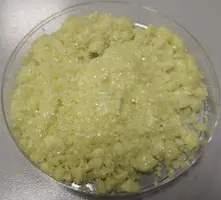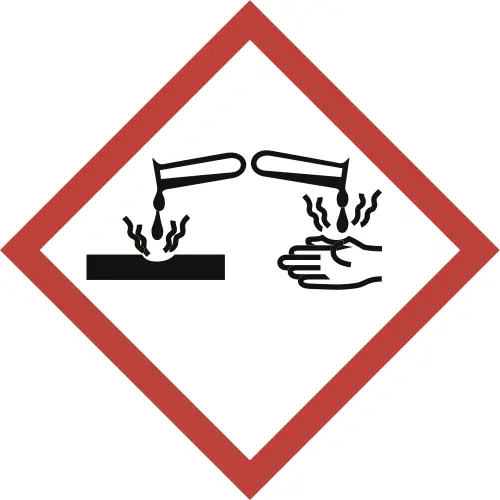Written by J.A Dobado | Last Updated on April 22, 2024
Objective
The purpose of this experiment is to perform a Claisen-Schmidt condensation. That is, a cross aldol condensation between a non-enolizable aldehyde and an enolizable ketone.
Background
Claisen-Schmidt condensation is a type of aldol condensation, which consists of the synthesis of α,β-unsaturated ketones by condensation of an aromatic aldehyde with a ketone.
As the aromatic aldehyde has no hydrogens in the α-position with respect to the carbonyl group, it cannot give self-condensation, but it reacts easily with the acetone in the medium.

El aducto inicial de aldolización no puede ser aislado ya que deshidrata espontáneamente bajo las condiciones de reacción. However, since the α,β-unsaturated ketone obtained contains active hydrogens, it can condense with another benzaldehyde molecule.
Depending on the amount of ketone used the formation of the mono– and bis– adducts can be optimized respectively and be differentiated by their physical and spectroscopic properties.
In the first part of the practice, acetone is used in a large excess to minimize the second condensation step. In the second part, benzaldehyde is present in a double excess. Sufficient EtOH is added to keep the initial condensation product in solution long enough to react with a second molecule of benzaldehyde.
Experimental procedure
A) Preparation of E-4-phenylbut-3-en-2-one (benzylideneacetone)
Pour 4.25 g of benzaldehyde into a 100 ml Erlenmeyer flask, with magnetic stirring, and add dropwise acetone (8 ml) followed by 1 ml of aqueous NaOH (10 %). Place the flask in a water bath (bain-Marie) at 25-30 ºC and shake the reaction for 90 min.
After that time, add dilute HCl slowly to acid pH and transfer the mixture to a separatory funnel and extract with CH2Cl2 (2 x 15 ml). Separate the phases and collect the organic extracts, wash with 15 ml of water and dry on anhydrous Na2SO4.
Filter with gravity the solution, washing the desiccant with 5 ml of CH2Cl2 and eliminate the solvent in the rotary evaporator until obtaining a solid of low melting point (estimated yield 77 % and melting point 42 ºC).
B) Preparation of 1,5-diphenyl-(E,E)-1,4-pentadien-3-one (dibenzylidenacetone)
Dissolve 5 g of NaOH in 25 ml of water, add 25 ml EtOH (95 %) and cool the mixture with tap water to room temperature.
In another 100 ml Erlenmeyer flask, pour 10.5 ml of benzaldehyde and add 2.9 ml of acetone, using a pipette. Then add the previously prepared alkaline ethanolic solution and stir the mixture for 15 min at 20-25 °C (external cooling may be necessary).
A yellow solid is obtained that is filtered under vacuum, washing with cold water to eliminate the alkali. Allow the product to dry at room temperature on filter paper. Recrystallize in ethyl acetate or ethanol (2.5 ml per g) (estimated yield 90 %, melting point 122 ºC).

Physico-chemical properties
This table collects data for the molecular weight (Mw), melting point (M.p.) boiling point (B.p.) and density of the reactives and compounds used in this laboratory experiment.
| Name | Mw (g/mol) | M.p. (ºC) | B.p. (ºC) | Density (g/ml) |
| Acetone | 58.08 | -94 | 56 | 0.791 |
| Benzaldehyde | 106.12 | -26 | 178-179 | 1.044 |
| Benzylideneacetone | 146.19 | 34-40 | 260-262 | 1.008 |
| CH2Cl2 | 84.93 | -97 | 40.0 | 1.33 |
| Ethyl acetate | 88.11 | -84 | 77.1 | 0.902 |
| NaOH | 40.00 | 318 | 1,390 | 2.130 |
| trans,trans-Dibenzylideneacetone | 234.29 | 104-107 | - | - |
GHS pictograms
Hazard pictograms form part of the international Globally Harmonized System of Classification and Labelling of Chemicals (GHS) and are collected in the followinf Table for the chemical compounds used in this experiment.
| Name | GHS |
| Acetone |   |
| Benzaldehyde |  |
| Benzylideneacetone |  |
| CH2Cl2 |  |
| Ethyl acetate |   |
| NaOH |  |
| trans,trans-Dibenzylideneacetone | Non-hazardous |
International Chemical Identifier
The IUPAC InChI key identifiers for the main compounds used in this experiment are provided to facilitate the nomenclature and formulation of chemical compounds and the search for information on the Internet for these compounds.
| Acetone | CSCPPACGZOOCGX-UHFFFAOYSA-N |
| Benzaldehyde | HUMNYLRZRPPJDN-UHFFFAOYSA-N |
| Benzylideneacetone | BWHOZHOGCMHOBV-BQYQJAHWSA-N |
| CH2Cl2 | YMWUJEATGCHHMB-UHFFFAOYSA-N |
| Ethyl acetate | XEKOWRVHYACXOJ-UHFFFAOYSA-N |
| NaOH | HEMHJVSKTPXQMS-UHFFFAOYSA-M |
| trans,trans-Dibenzylideneacetone | WMKGGPCROCCUDY-PHEQNACWSA-N |
Return to the Organic Synthesis Experiments.
Video on the Claisen-Schmidt condensation: α,β-unsaturated ketones
References
- Isac-García, J.; Dobado, J. A.; Calvo-Flores, F. G.; and Martínez-García, H. (2015). Experimental Organic Chemistry Laboratory Manual. Elsevier Science & Technology. ISBN: 978-0-12-803893-2
- Vogel, A.I., Furniss, B.S., Hannaford, A.J., Tatchell, A.R., and Smith, P.W.G. (1989). Vogel’s Textbook of Practical Organic Chemistry (Vogel’s Textbook series). Longman. ISBN: 9780470214145